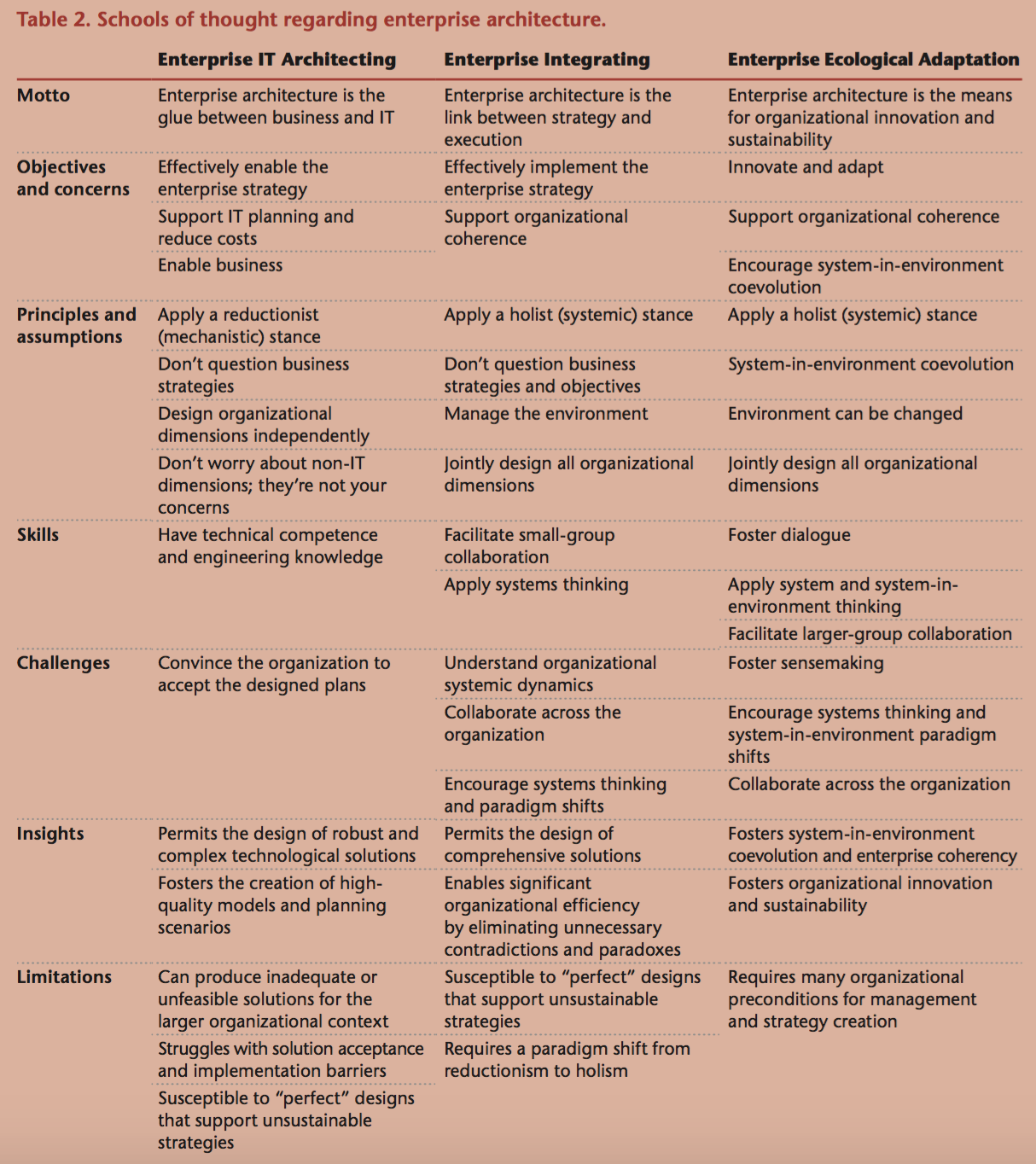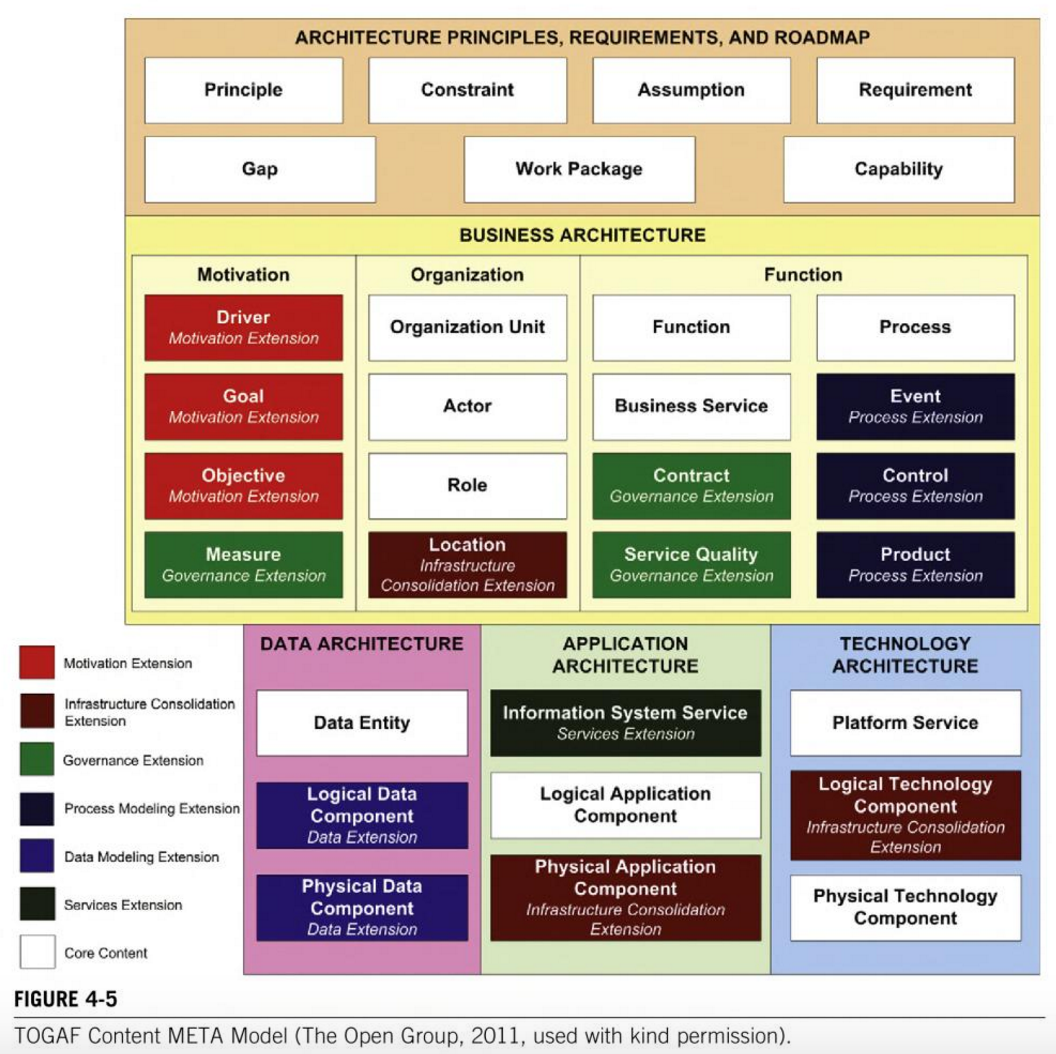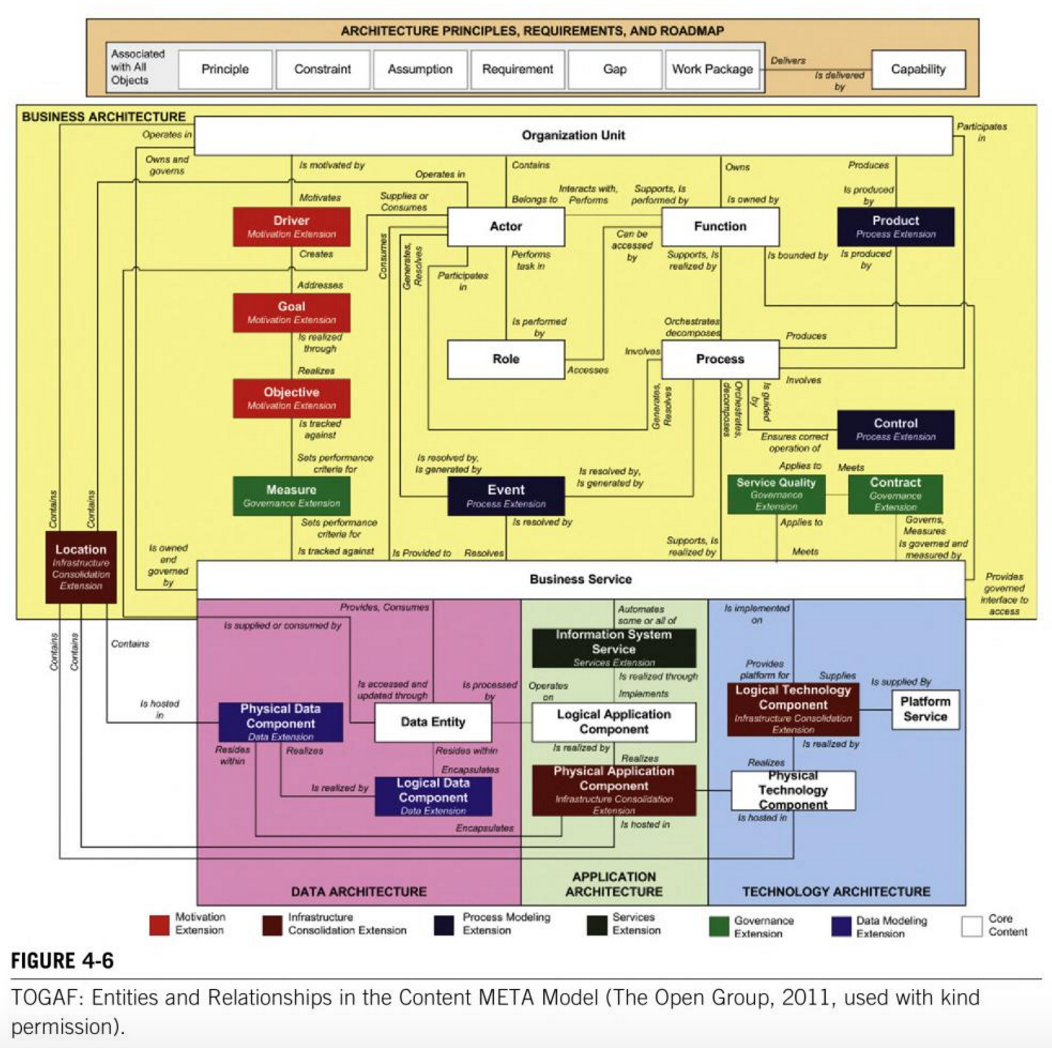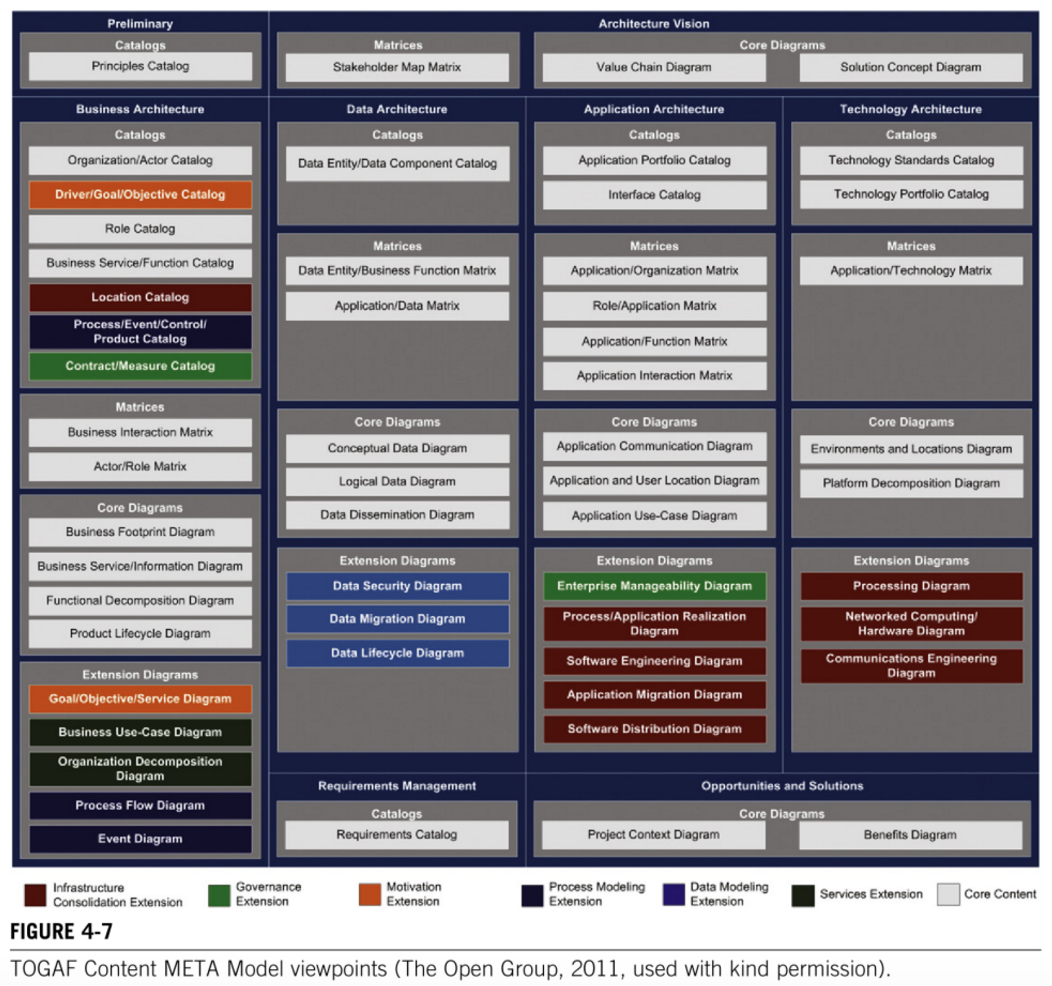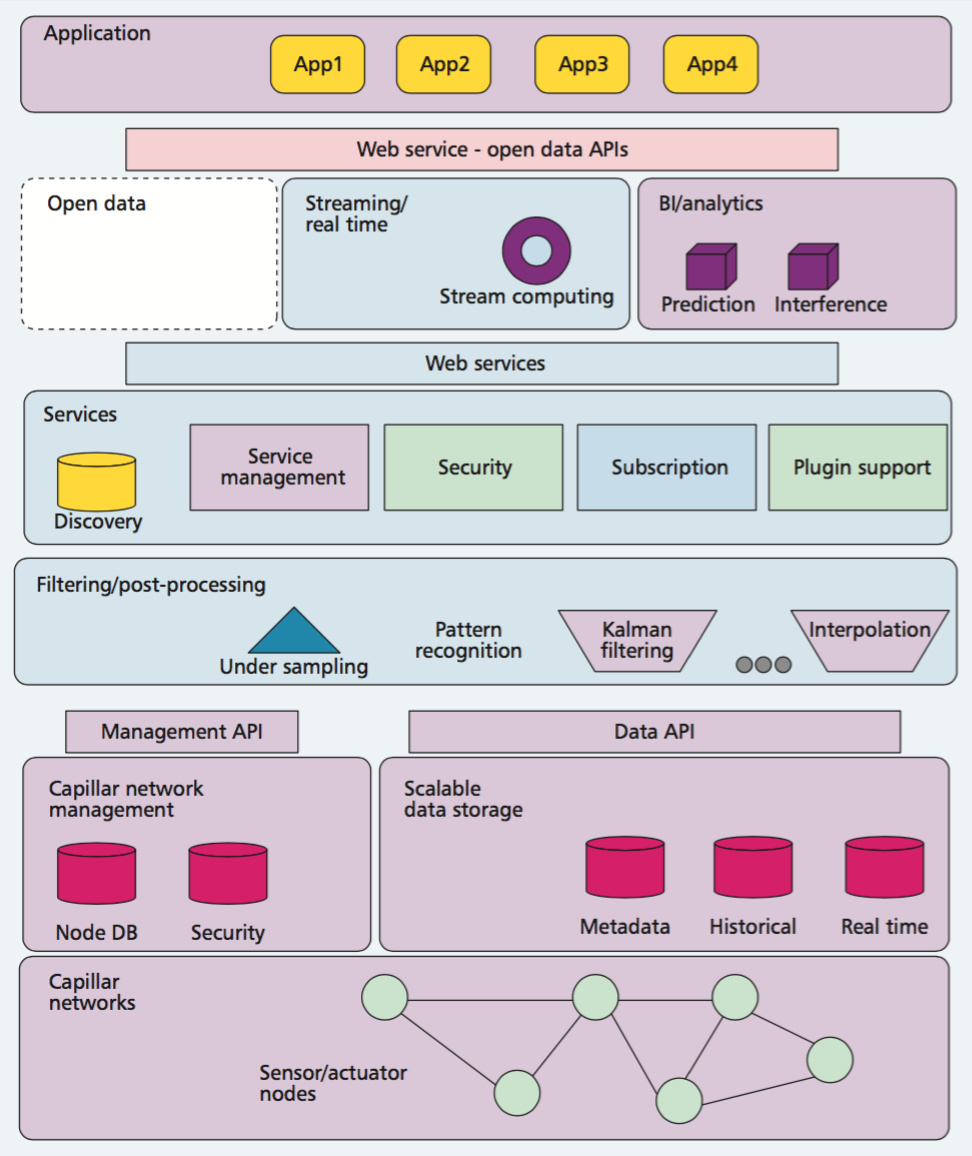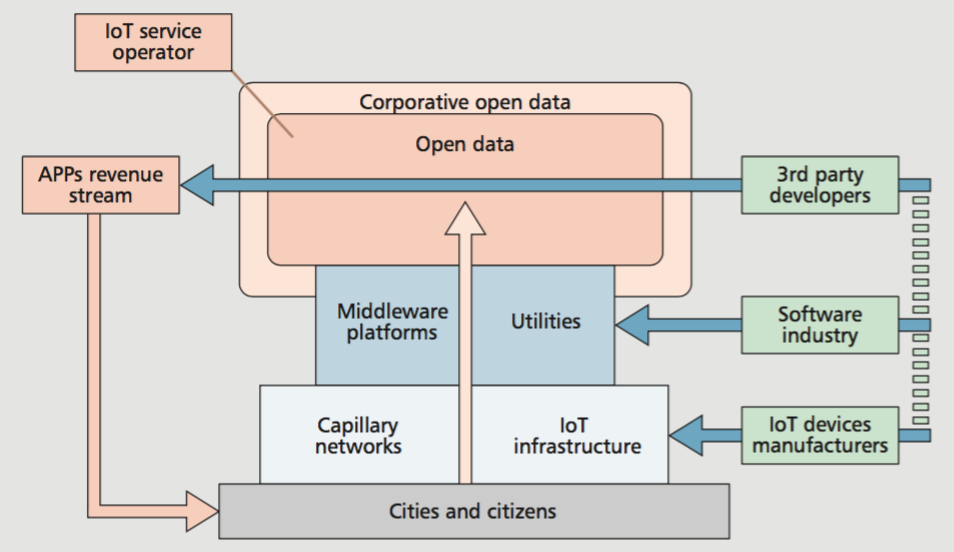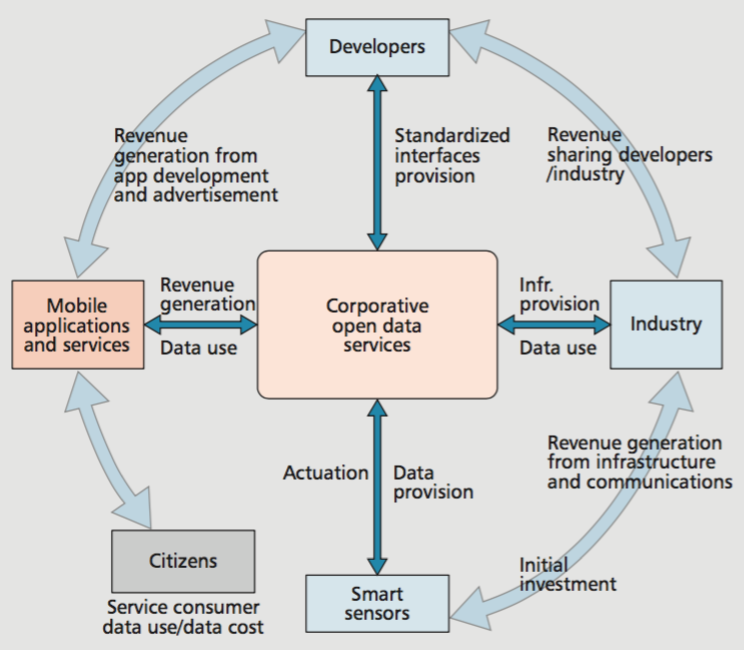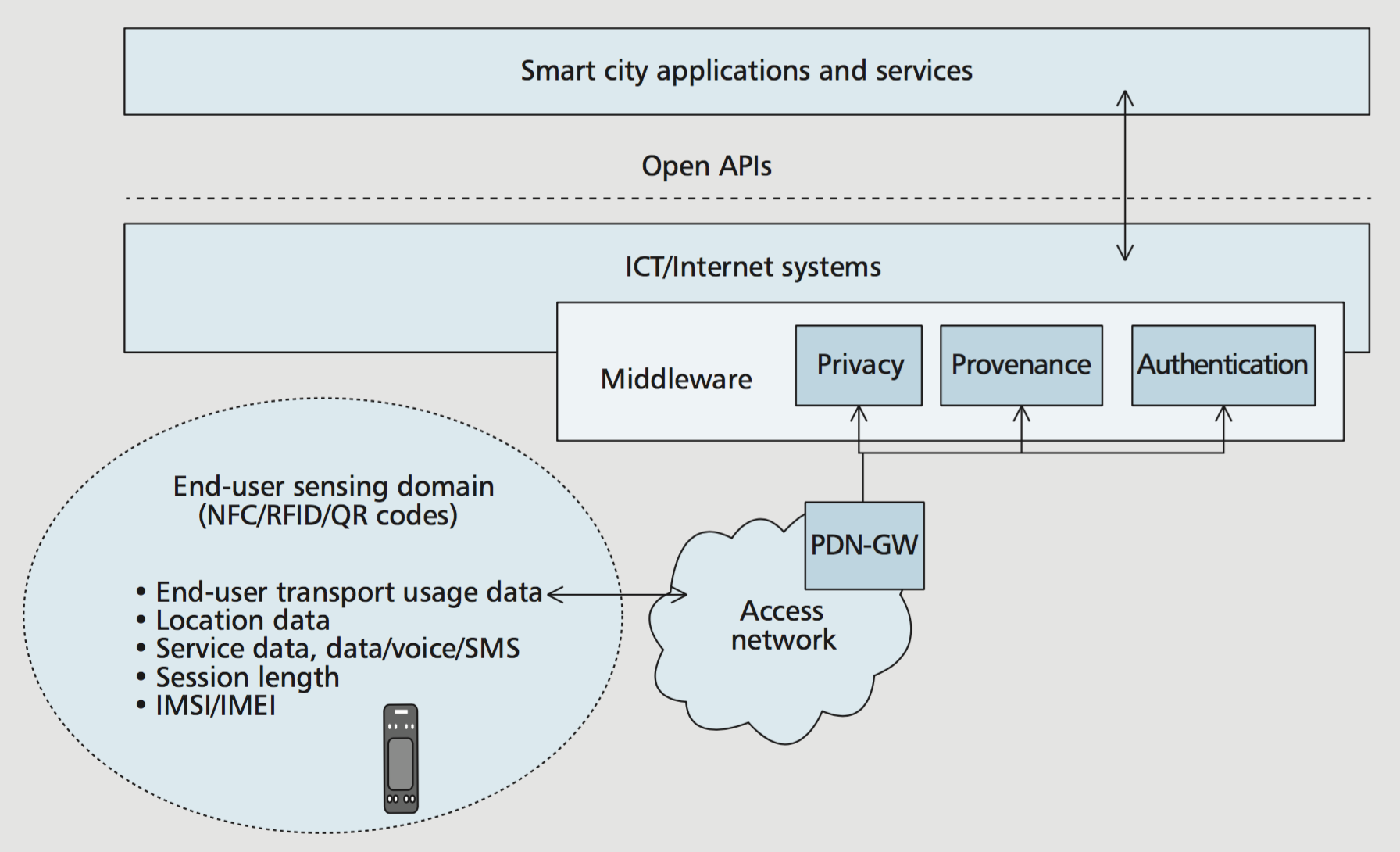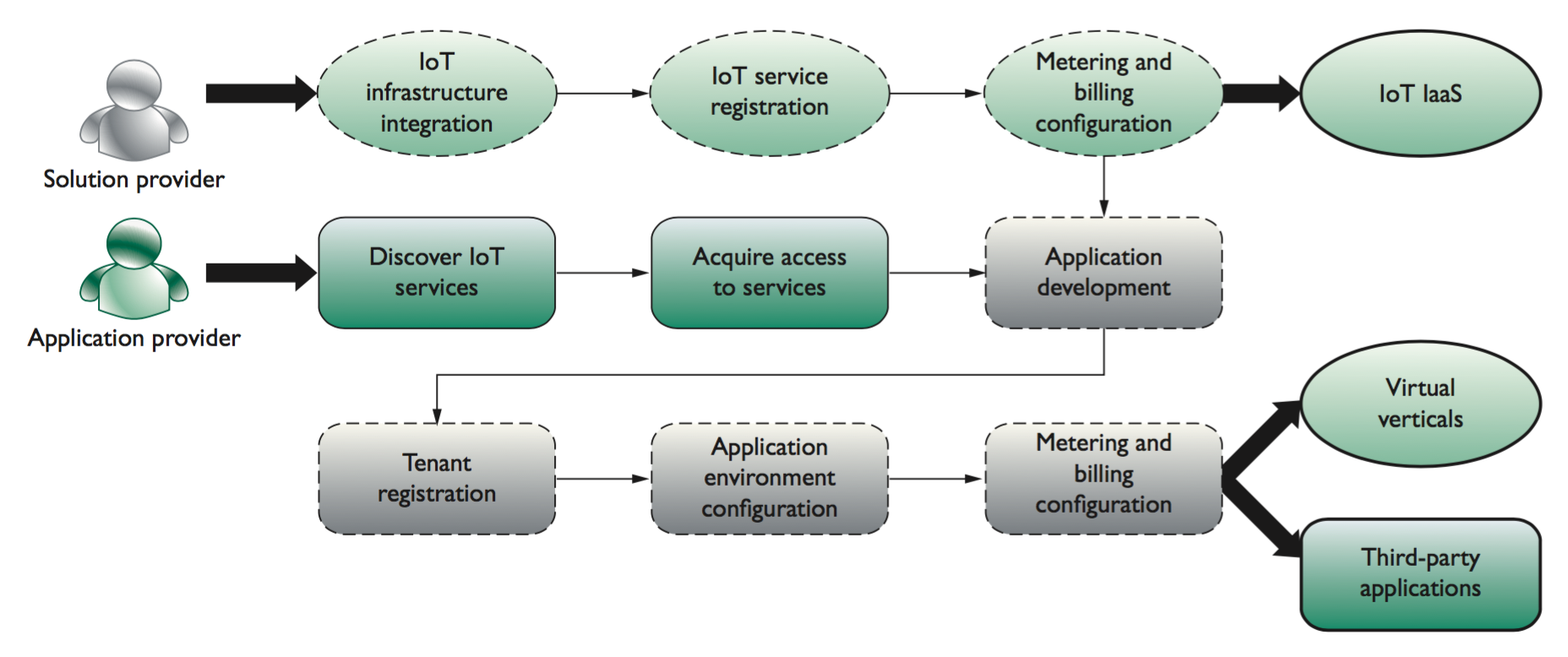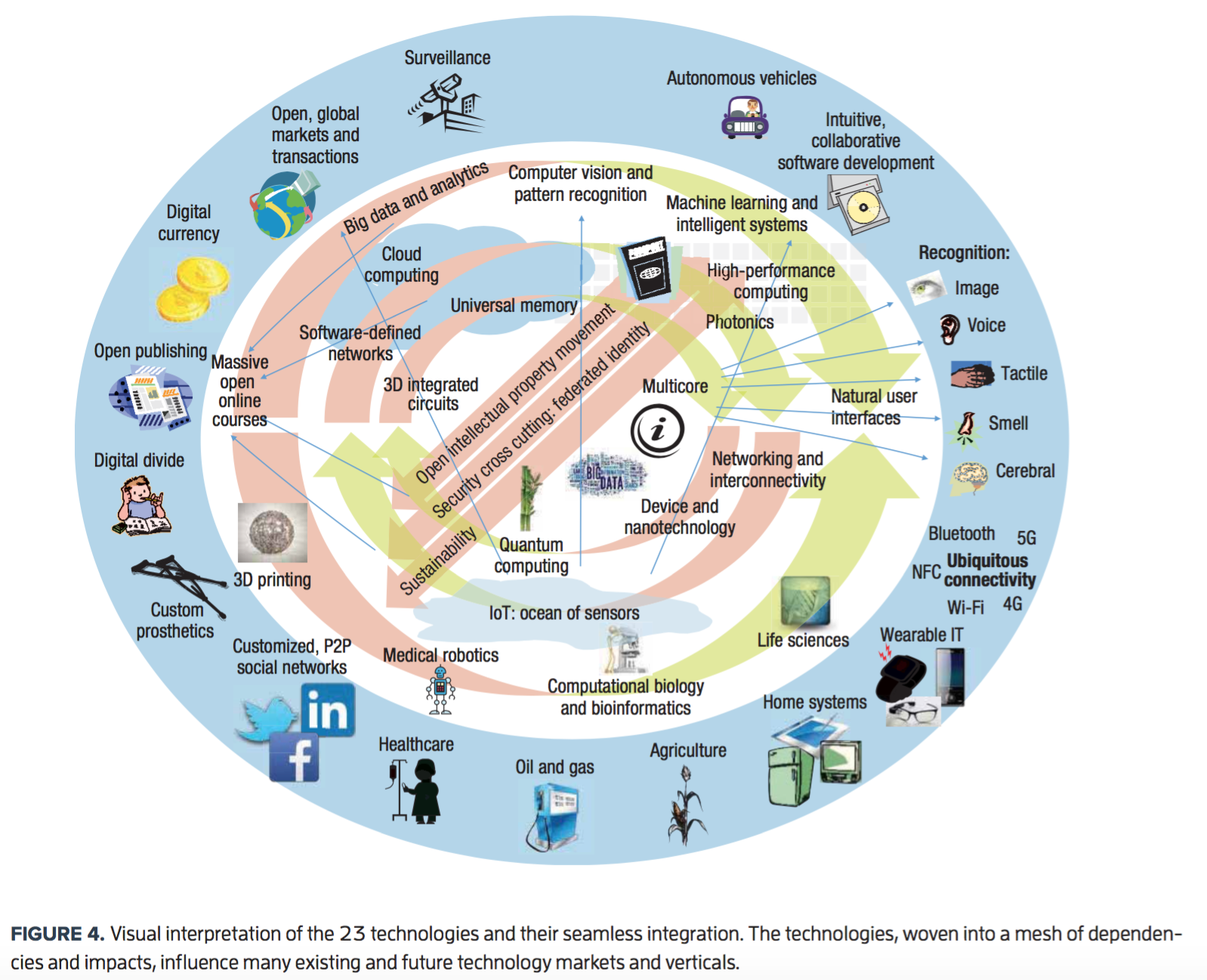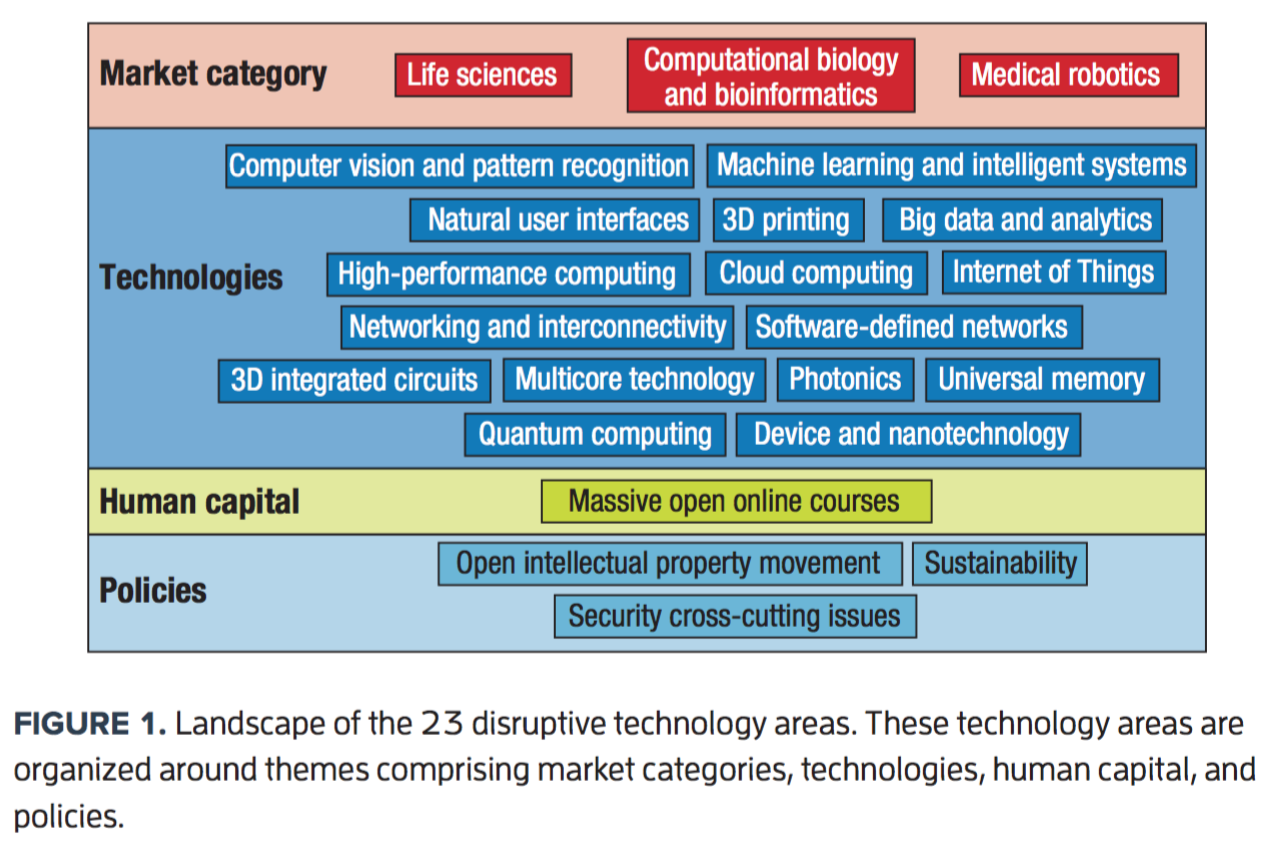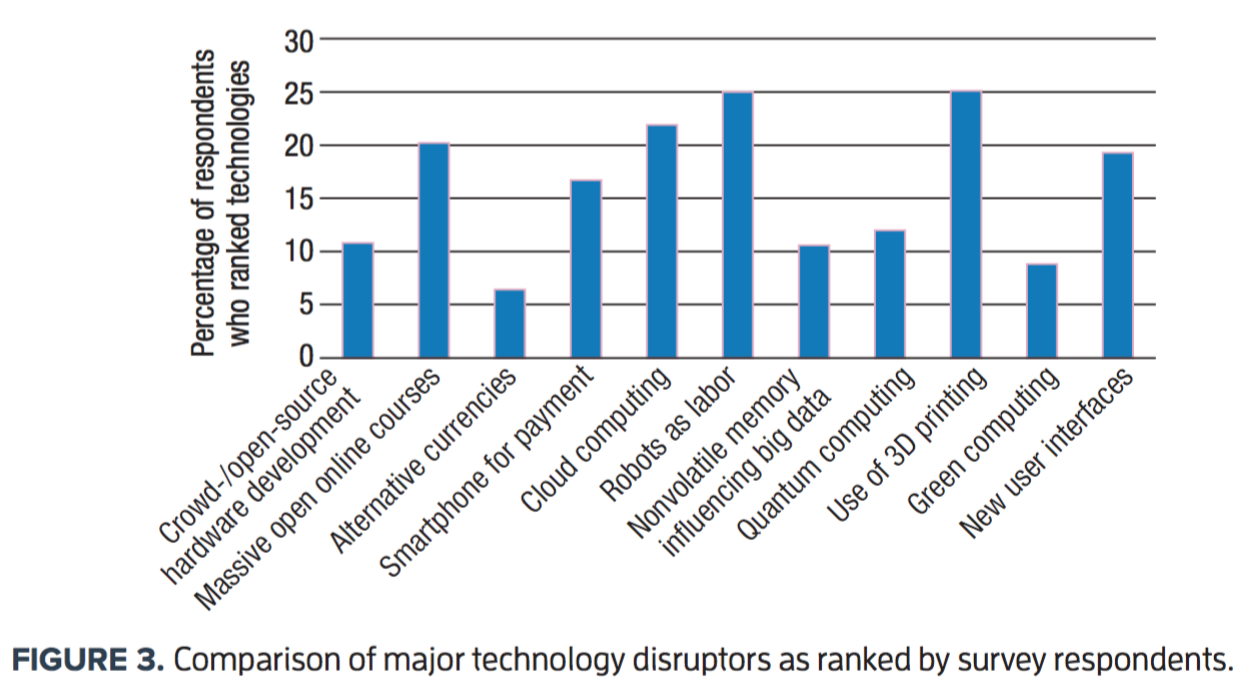Lapalme has discussed “Three Schools of Thought on Enterprise Architecture” at IT Professional in 2012. Korhonen and Halén explored more on Enterprise Architecture for Digital Transformation.
Schools of Though on EA:
- The Enterprise IT Architecting (EITA) school views enterprise architecture as “the glue between business and IT”. Focusing on enterprise IT assets, it aims at business-IT alignment, operational efficiency and IT cost reduction. It is based on the tenet that IT planning is a rational, deterministic and economic process. EA is perceived as the practice for planning and designing the architecture.
- The Enterprise Integrating (EI) school views enterprise architecture as the link between strategy and execution. EA addresses all facets of the enterprise in order to coherently execute the strategy. The environment is seen both as a generator of forces that the enterprise is subject to and as something that can be managed. EA is utilized to enhance understanding and collaboration throughout the business.
- The Enterprise Ecological Adaptation (EEA) school views EA as the means for organizational innovation and sustainability. The enterprise and its environment are seen as coevolving: the enterprise and its relationship to the environment can be systemically designed so that the organization is “conducive to ecological learning, environmental influencing and coherent strategy execution.” EA fosters sense making and facilitates transformation in the organization.
Level or Enterprise Architecture
- Technical Architecture (AT) has an operational focus on reliability and present day asset utilization and is geared to present-day value realization. This is the realm of traditional IT architecture, information systems design and development, enterprise integration and solution architecture work. AT also addresses architectural work practices and quality standards, e.g. architectural support of implementation projects, development guidelines, and change management practices. In terms of organizational structure, AT would pertain to the technical level of organization, where the products are produced or services are provided.
- Socio-Technical Architecture (AS) plays an important role as the link between strategy and execution. The business strategy is translated to a coherent design of work and the organization so that enterprise strategy may be executed utilizing all its facets, including IT. AS is about creating enterprise flexibility and capability to change rather than operational optimization: the focus on reliability is balanced with focus on validity in anticipation of changes, whose exact nature cannot be accurately predicted. AS would pertain to the managerial level of organization, where the business strategy is translated to the design of the organization.
- Ecosystemic Architecture (AE) is an embedded capability that not only addresses the initial design and building of a robust system but also the successive designs and continual renewal of a resilient system. The architecture must allow for co-evolution with its business ecosystem, industry, markets, and the larger society. AE would pertain to the institutional level of organization, where the organization relates to its business ecosystem, industry, markets, and the larger society.
Adaptation and Maladaptation

Source: Korhonen J.J., Halén M. 2017. Enterprise Architecture for Digital Transformation. IEEE 19th Conference on Business Informatics. DOI 10.1109/CBI.2017.45



